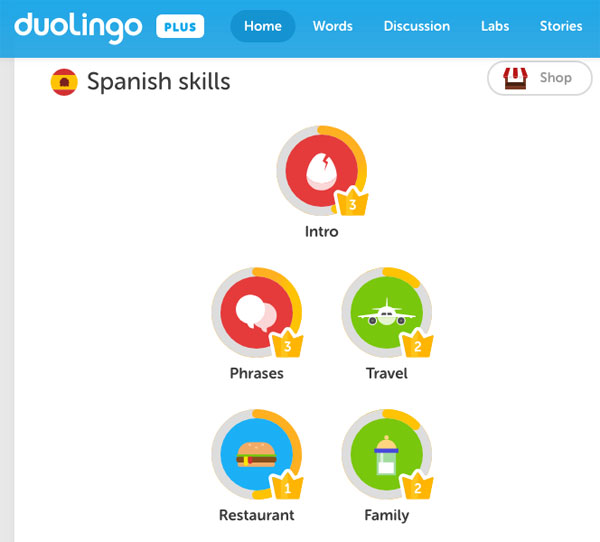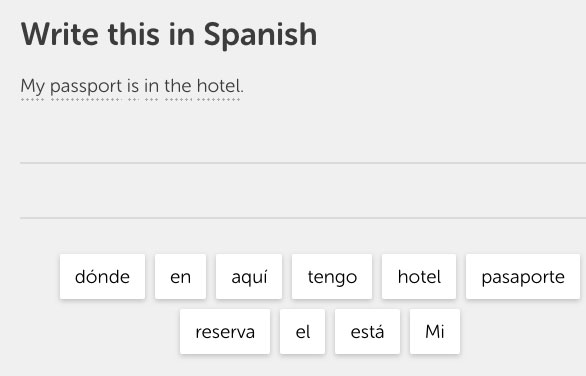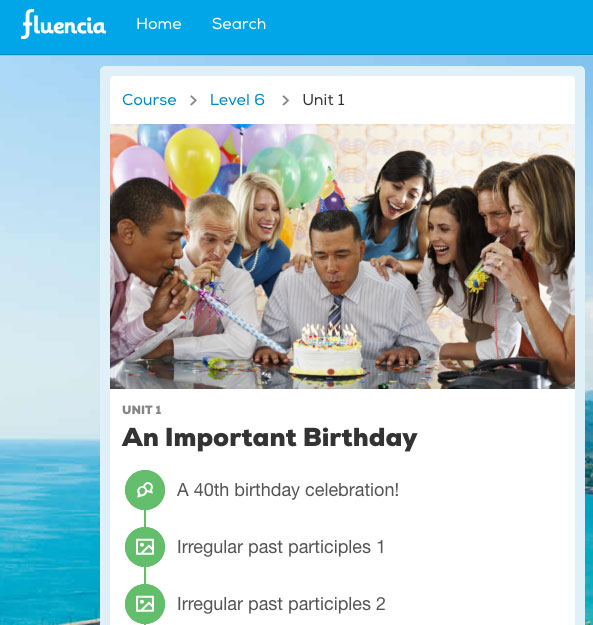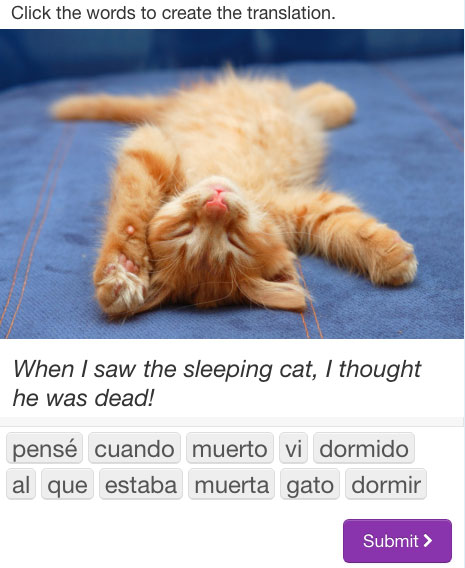¿Hablas español?
Solo un poco. Pero quiero apender más.
MLB and I are volunteering as teachers in an English As A Second Language (ESL) class sponsored by our church. We inherited a class comprised of adult students primarily from Mexico. Since they are all native Spanish speakers, we are trying to improve our fluency in their native language.
There’s a great deal of debate about whether ESL teachers should use Spanish (or any non-English language) in class. I won’t attempt to debate the pros and cons, but I will say that when you get less than two hours per week with students, you need to be as efficient as possible in communicating concepts, and being able to set the context in their native language has been invaluable. I have yet to find a picture card or a pantomime that accurately depicts the concept of “enough.”
In addition, our sometimes-bumbling attempts at Spanish provides two intangible benefits. First, I believe it demonstrates some respect for the students’ culture. Second, it gives us as teachers a perspective on just how difficult learning another language can be for adults. And if we aren’t afraid to mess up when we attempt Spanish, maybe the students won’t fear making mistakes in English.
We’ve actually been working on our Spanish skills for almost a year, using two different self-paced programs. The first is Duolingo, which bills itself as “the world’s most popular language learning platform.” Duolingo’s “active learners” count seems to support this claim, with almost 22 million English speakers taking Spanish, and 29 million Spanish speakers taking English. In all, Duolingo has about 100 English-to-xxx and xxx-to-English courses. We have downloaded the app to our tablets and phones and do lessons every morning as a part of our normal routine.
The other program we’re using is Fluencia, a web-based curriculum focused solely on Spanish. Again, daily lessons in Fluencia are a part of our morning routine.
The two programs share some features. Both offer “starter” lessons for free, but their usefulness is extremely limited. The paid versions of each unlock the full potential of the programs. Both track your progress and provide daily reports via email or notifications. Both programs provide immediate feedback during the lessons about whether you’re succeeding. And both allow you to provide your own feedback about the lessons themselves.*
However, the two programs are quite different in their approaches. Duolingo is more self-paced, and arranges its lessons by narrow topic (e.g. Animals, Time, Directions, Adverbs, etc.). You can pick whichever topics appeal to you the most, and each provides a series of lessons of [theoretically] increasing difficulty. Duolingo’s emphasis seems to be on building vocabulary. You’re on your own to figure out the grammatical rules, unless you want to exit the lessons and use Duolingo’s extensive online resources.


Fluencia has a structured curriculum that you work through in linear fashion; you can’t advance to the next set of lessons until you’ve mastered (or at least stumbled through, in my case) the previous set. Fluencia’s lesson plans are built around social situations (e.g. “Explore household chores and items, celebrity, and gossip”; “Learn words for your first apartment, job interviews, banking…and describing a city”). Fluencia does a much better job of explaining grammatical rules as a part of the lesson, and it also provides lessons on Spanish culture, customs, idioms, geography, etc.


Both platforms have their drawbacks. You can download Duolingo lessons to work offline but Fluencia requires a connection to the web. Some of Duolingo’s lessons seem excessively simple and repetitive, even at the advanced levels (most people really don’t need to see “el hombre” twenty times to remember that it means “the man”). On the other hand, some of Fluencia’s lessons are brutally hard, especially the reviews that require absolute mastery of all the lessons included in each level. My aging brain seems incapable of absorbing everything that Fluencia expects, and that gets frustrating.
One of the most puzzling aspects of Duolingo is the way it “punishes” you for not answering questions correctly. Once you miss three questions, you are locked out of the program for 24 hours. This seems like an odd way to encourage learning. The workaround is to upgrade to the paid version, then turn on a special setting that stops that ridiculous approach.
In the end, I can’t recommend either program over the other, as they each provide useful tools via their different approaches. Duolingo’s strength is building vocabulary; Fluencia’s is providing grammatical context.
Nevertheless, fluency is not coming easily. I feel like I have a pretty good working vocabulary, but grammar is probably still on a first-grade level. I can read Spanish pretty effectively, but speaking anything but the most rudimentary sentences is a struggle. Worst of all, listening to native speakers is completely frustrating, especially with the Latin tendency to speak quickly. (In fairness, our students often tell us that we’re speaking too quickly.)
One additional resource I highly recommend is SpanishDict, a translation resource that is reliable and comprehensive. It’s done more to help me understand Spanish verb conjugations than either Duolingo or Fluencia. You can access SpanishDict as either a standalone app or via its website.
*I mentioned above that these programs allow students to provide feedback about the lessons. In Duolingo’s case, you can report a question for which you believe the provided answer is either wrong or excessively limited (Spanish provides multiple ways to say the same thing, but the program doesn’t always recognize that.) I’ve discovered that this feedback actually works. I’ve submitted several suggestions and received prompt responses from Duolingo to the effect that they will update their program to accept my suggestions for acceptable answers.
Discover more from The Fire Ant Gazette
Subscribe to get the latest posts sent to your email.

That’s very weird about Duolingo — I’ve been using the free version on my phone for several years and have never been locked out for failing to get something right. Maybe it’s a “feature” for Apple users? 🙂
I’ll bet you’re right. We Mac users are persecuted for everything else!